Have you been hearing the buzz around Grow Bags and how easily one can produce mushrooms with them? We invite you to find out the best mushroom grow bags!
Also in the article, we will discuss types of grow bags, what features are important to cultivate mushrooms, and the correct way to grow them. Let’s jump in!
Contents
A Mushroom Grow Bag – Components
The bags which are used to cultivate mushroom cultures are known as Mushroom Grow Bags or at times spawn bags. They provide an ecosystem and growing conditions that trigger the growth of the seeds and develop a grown plant.
The grow bags have many types and features. If planning to grow mushrooms one should get familiar with these and the vocabulary around them so let’s study those.
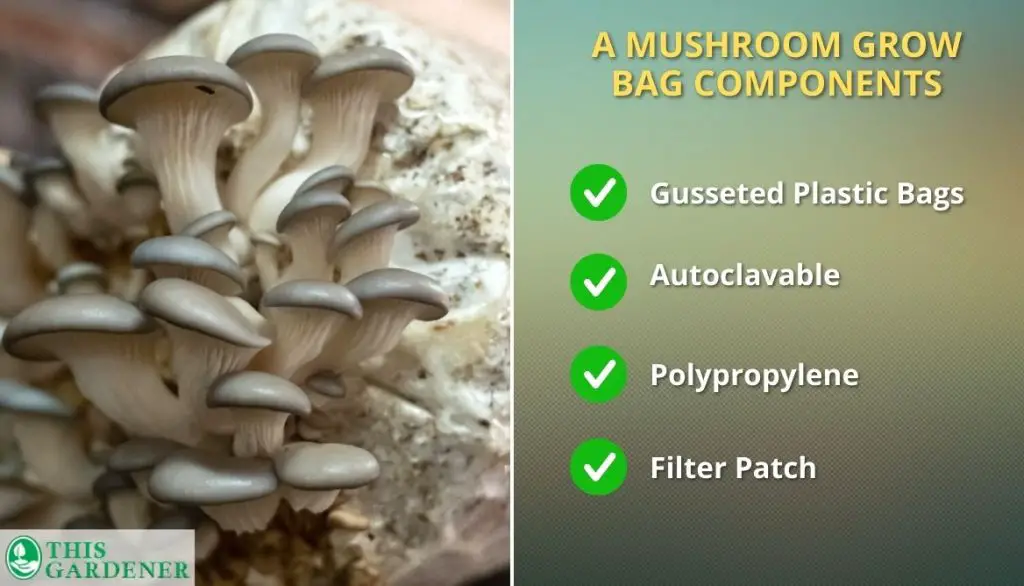
1. Gusseted Plastic Bags
“Gusseted” refers to the type of bag that has sides that fold inside when it is emptied and laid flat. When needed it can open up, and contain large amounts of grains or sawdust. When done using it can be easily stored and used later.
The folds or gussets can also be utilized to steadily hold a filter. This will protect against the air that seeps in during post-sterilization cooling.
2. Autoclavable
Autoclavable is the quality of a material that can withstand a high temperature of as much as 250°F (121°C). A test is performed to confirm that the material is able to remain intact for at least 30 to 60 minutes to verify its autoclavability.
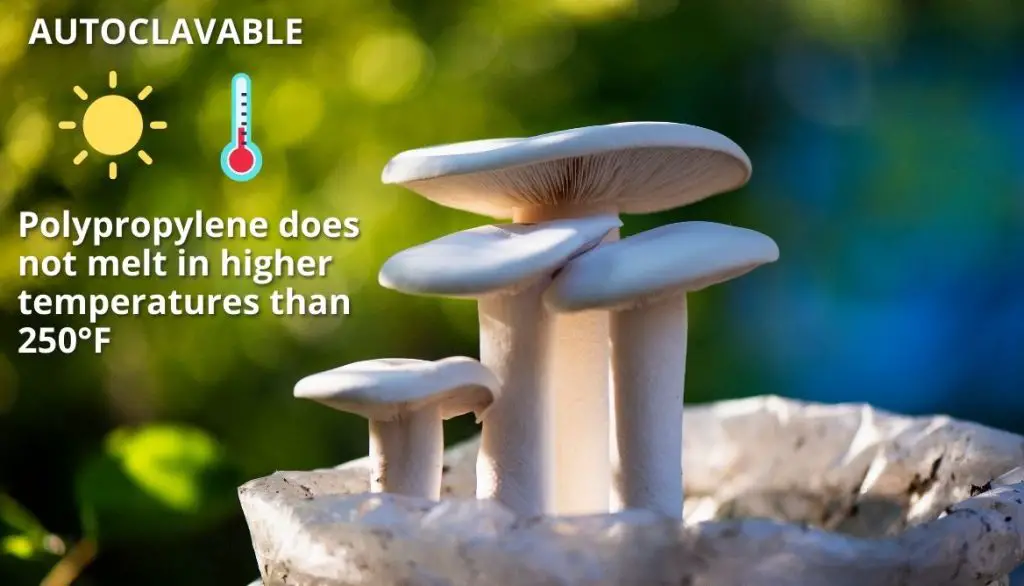
Polypropylene is one of the materials that does not melt in higher temperatures than 250°F so many grow bags are made of it. Grow bags should be autoclavable so that sterilization is possible.
3. Polypropylene
Polypropylene is the thermoplastic material of the bags. It has a melting point of 266 to 340 °F which is much higher than the maximum temperature of 250°F. This is extremely useful during the sterilization of grains or sawdust.
4. Filter Patch
A filter patch is present at the front of the bag. It is a vital part of the bag as it lets fresh air enter the bag while leaving harmful bacteria and spores outside. Fresh air is the mushroom’s basic requirement to grow but it can not be left in the open air as contaminants can attack it.
Best Mushroom Grow Bags: Our Top Picks
We have established that Grow bags are needed for mushrooms. Now comes your question which Grow Bag should you use? To answer this we are comparing the top-rated ones for you.
FEATURES | IMPRESA Mushroom Growing Bags | OUTGROW Mushroom Growing Bags | FITWICK Mushroom Growing Bags |
Photo: | |||
Brand: | IMPRESA | OUT-GROW | FITWICK |
Material: | Polypropylene | 3.0 Mil Polypropylene | Polypropylene |
Filter Size: | 0.2 Micron | 5 Microns | 0.2 Micron |
Substrate: | No substrate | Pasteurized Manure Based | No substrate |
Weight: | 2.25 Pound | 1 Pound | 2.3 Pounds |
Capacity: | 5-7 pounds/little over 1 gallon | 5 Pounds | 5 Pounds |
Dimensions: | 6″Dx5″Wx20″H | 20.3Dx0.2W x7.6H | 50.8Dx15.2Wx12.7H |
USP: | Tear Resistance and Excellent Filtering | Cost-effective | Durable Material |
Rating: | |||
Available: |
1. Boomr Bag 5lb – Manure-Based Bulk “Substrate Blend”
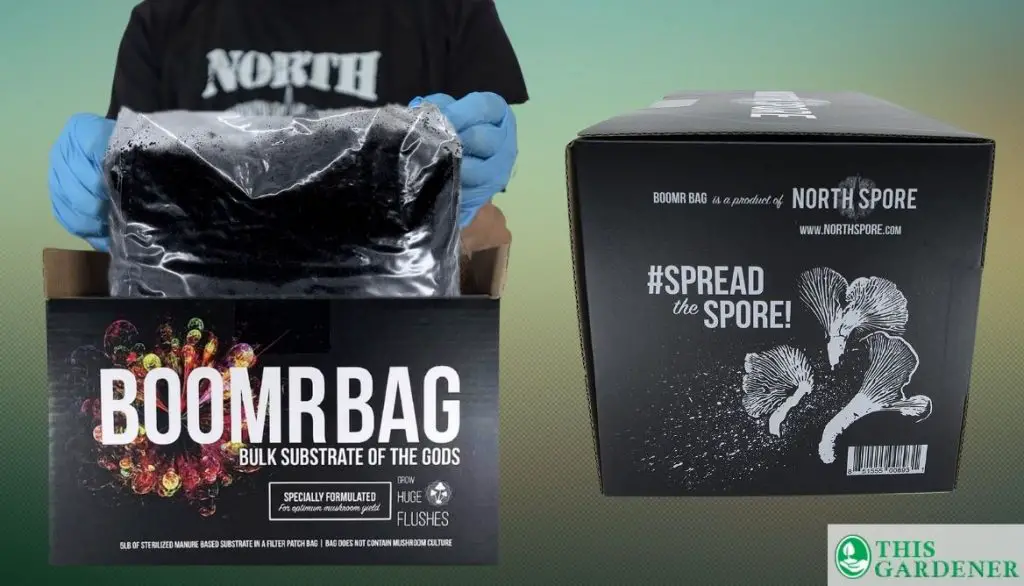
Substrate: | Horse manure and coco coir. |
Weight: | 5 Pounds |
Dimensions: | 23.22 x 15.82 x 13.82 |
USP: | Produces high-yields, grows several species of mushrooms |
North Spore’s Boomr Bag is most consumers’ favorite hence making our list. It has been credited to produce a large number of yields and various mushroom species. It is sterilized and can be stored for a long time before usage. Let’s break down its plus points and downsides.
- Sterile manure-based substrate.
- One can cultivate mushrooms of their choice.
- User-friendly design for novice growers.
- The company offers customer support.
- Some customers have complained of poor shipment caused damage to the bags.
Bottom Line
Overall a great product a game changer in mushroom cultivation and arguably tops the list of best picks as even an inexperienced grower can grow mushrooms.
2. Outgrow Manure-Based Mushroom Substrate in Mushroom Grow Bags
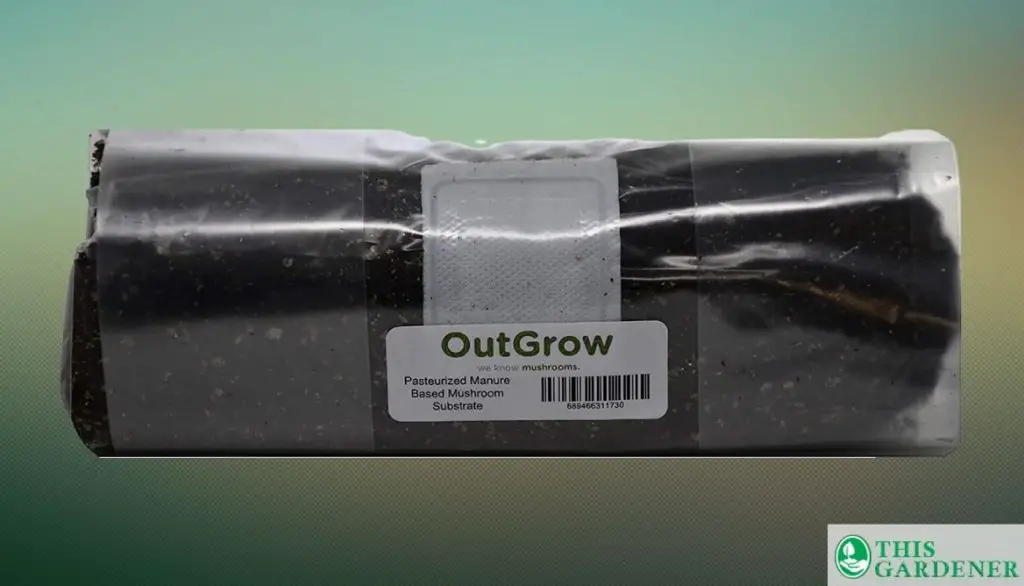
Material: | 3.0 Mil Polypropylene |
Filter Patch: | 5 microns |
Substrate: | Pasteurized Manure Based |
Weight: | 1 Pound |
Capacity: | 5 pounds |
Dimensions: | 8″D x 3″W x 3″H |
USP: | Organic and pH balanced |
If you are browsing the market for a cost-saving option then this is manure-based mushroom is what you should go for. It is fully pasteurized and helps in growing mushrooms in large quantities. Let’s check out more reasons why consumers are convinced that it is the best grow bag.
- Made of a premium substrate.
- Perfect for people looking to grow mushrooms in small spaces.
- No injection port is needed.
- Comes with a plant hanger.
- Known to be difficult for new growers.
Bottom Line
Purchase these grow bags because works terrifically with colonized spawn, give mass yield at a relatively less price, and are great for people looking to grow mushrooms indoors.
3. FITWICK Mushroom Growing Bags 55-Pack Sealable Spawn Bags
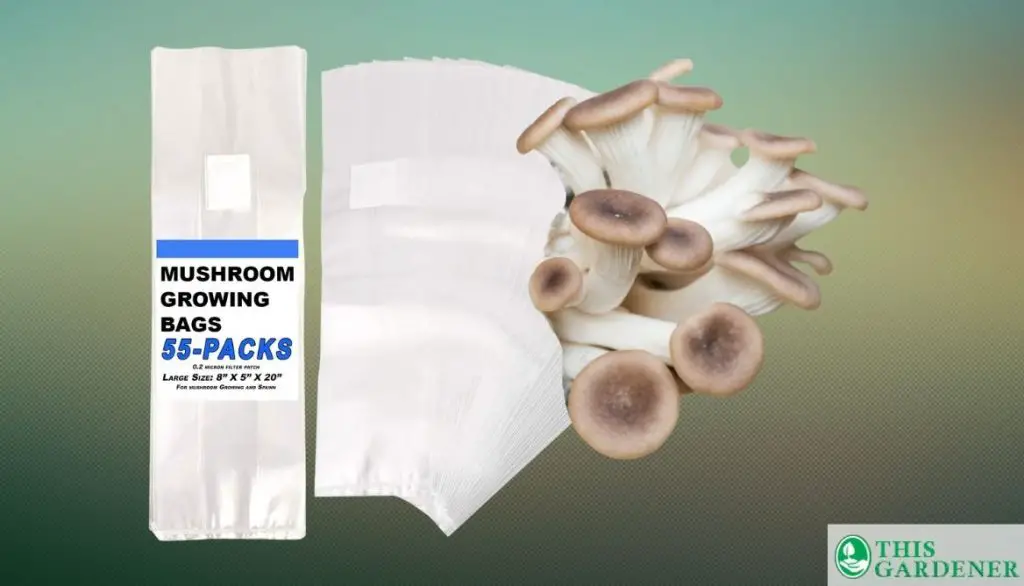
Material: | 6 Mil Polypropylene |
Filter Patch: | 0.2 Micron Filter |
Substrate: | No substrate. |
Weight: | 2.99 Pound |
Capacity: | 5 pounds |
Dimensions: | 10.15L x 5.12W x 1.81H |
USP: | High-Temperature Resistance (126°C) and Re-useability. |
If you are tired of dealing with a mushroom growing kit that tears apart, does not have proper standing mounts, and lacks sturdiness then this large bag will solve your problems. It is made up of high-quality polypropylene material. Customers love it for its sturdiness. Let’s see what are the other highlights of this bag:
- The bags have gussets on the sides.
- Made up of thick plastic.
- Sealable and Autoclavable.
- Perfect for both indoors and outdoors.
- Users looking for a larger-size substrate bag than this can get disappointed.
Bottom Line
This product ranks the highest in terms of durability and standing mount. It can stand high temperatures this is why many who are wanting to grow mushrooms in the greenhouse are quite pleased with it.
4. Impresa Products 50-Pack Mushroom Growing Bags
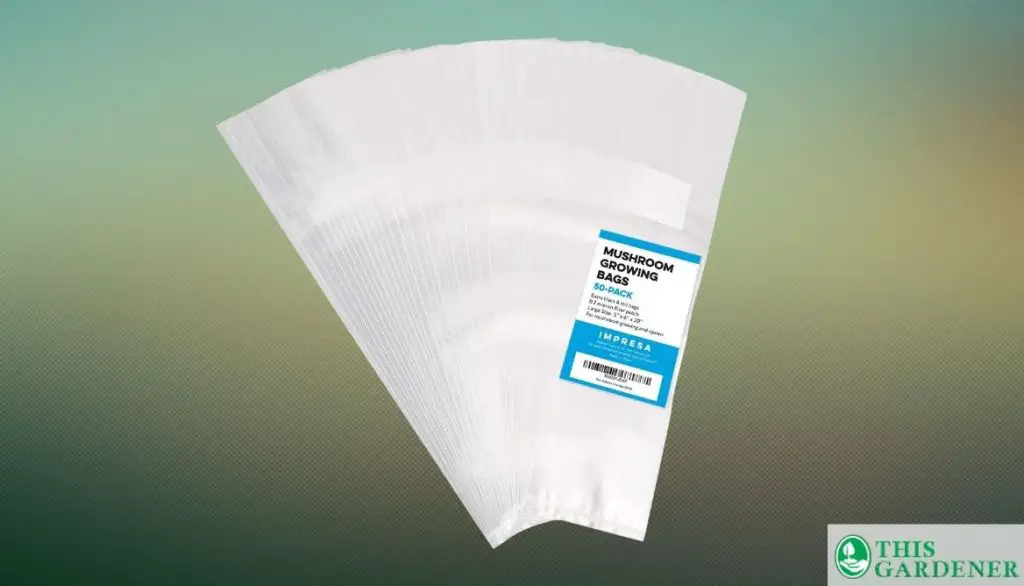
Material: | Polypropylene |
Filter Patch: | 0.2 Micron |
Substrate: | No substrate |
Weight: | 2.25 Pound |
Capacity: | 5-7 pounds or a little over 1 gallon |
Dimensions: | 6″D x 5″W x 20″H |
USP: | Tear Resistance and Excellent Filtering |
Impresa is definitely in the running when it comes to brands that sell mushroom spawn bags. Users have noted that these do not deform or burst hence vouching for their sturdiness. Let’s check more of what makes these amazing to use.
- Breathable mushroom bags.
- Biodegradable mushroom bags.
- Can cultivate and clone oyster mushrooms.
- 0.2 micron punched holes for fresh air.
- Customers received a batch that was not as transparent as crystal as usual.
Bottom Line
You can trust this product and order in a bundle because it ticks all the boxes of a great grow bag but be careful about the size you order. If you receive a defective product quickly engage the vendor for an exchange.
5. Reinforced Mushroom Grow Bags Oyster Mushroom Spawn, Grain Root Substrate
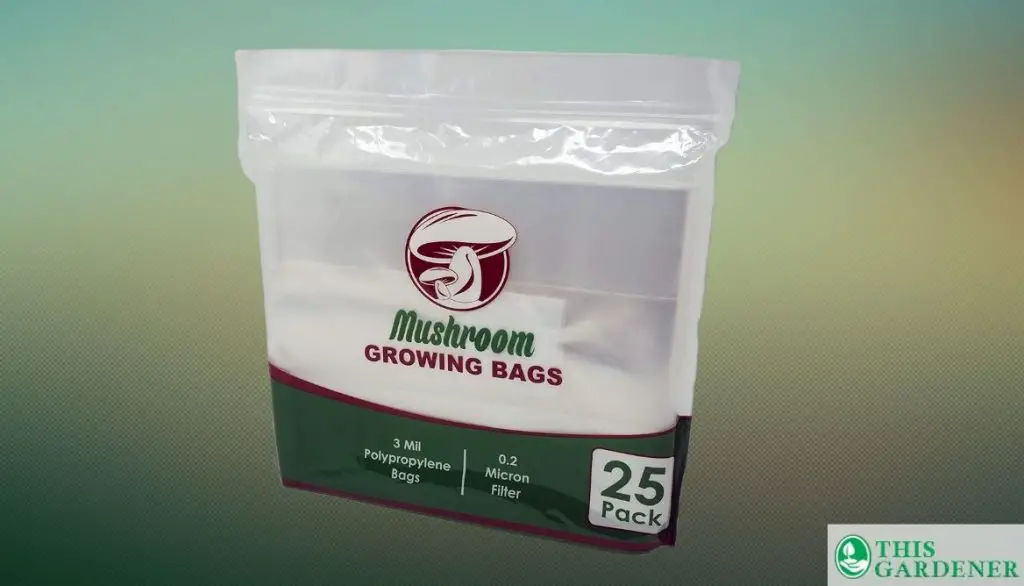
Material: | Polypropylene |
Filter Patch: | 0.2 Micron |
Substrate: | No substrate |
Weight: | 1.3 Pounds |
Capacity: | 5-10 Pounds |
Dimensions: | 1″D x 2″W x 2″H |
USP: | Rip/Tear Resistant |
Reinforced bags are incredible for growing blue oysters, morels, enoki, or portabella. These are made up of 3-mil polypropylene and are large in size. The filter patch works like a charm and prevents all dangerous substances from affecting the soil. What are other reasons that make these a top pick, let’s find out.
- Supports 5 to 10 pounds of spawn block.
- Sealable top.
- Heavy-duty Polypropylene.
- Disposable
- In case of no self-healing port, you will have to install your own.
Bottom Line
If you are looking for a trustable brand, high-grade packaging, and tear-resistant grow bags to produce fresh oyster mushrooms, shiitake, or lion’s mane mushrooms buying this one would be a great choice.
Mushroom Grow Bag Features
While purchasing a grow bag you need to check for the following features. Many growers struggle because they are unaware of the roles each of these features plays in the cultivation of the mushroom.
Knowing about it will make a big difference in the final product so let’s go over these.
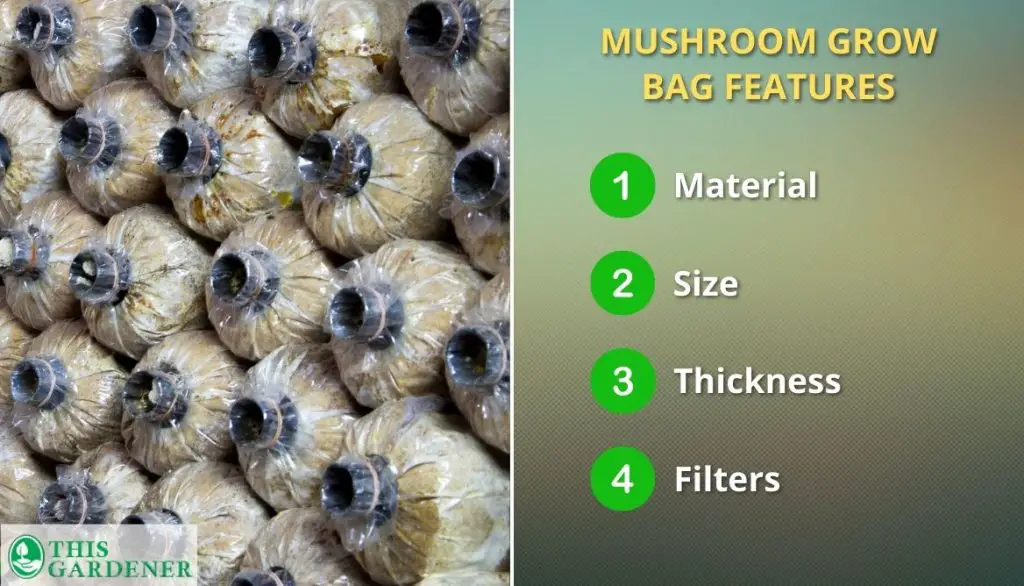
1. Material
The material of grow bag is high-grade polypropylene plastic so that it can withstand temperature inside an autoclave. This is important as during the sterilization process it can serve as a container for the substrate and use it for fruiting by adding mushroom spawn.
2. Size
Grow bags are available in various sizes. You should choose according to:
- How big of a crop you are planning to grow
- How many substrates do you want to utilize?
- Take into account the size of the sterilizer.
- If you want to grow them on a small scale then size uses a smaller bag.
Generally, a bag size of 8″ wide x 5″ depth x 18 tall” will give you 5 pounds of grain spawn and sawdust. You can fit 6 of these in a 20-liter pressure cooker.
3. Thickness
The thickness of the bags should be kept in mind because thicker bags are less likely to rip. The thin bags are cheaper in cost but if torn or ripped they can ruin the mushroom culture as they will let the contaminants in.
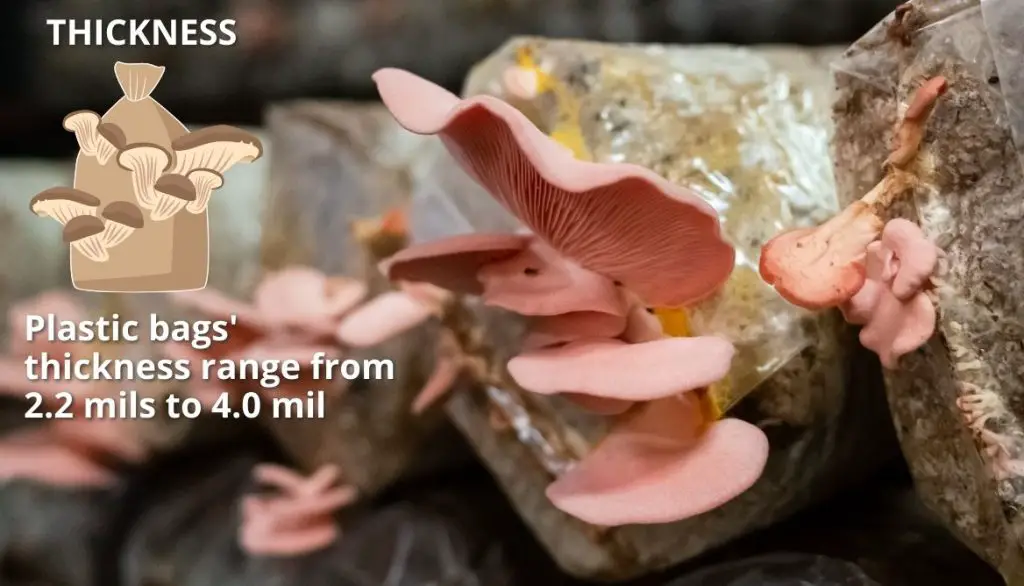
Plastic bags‘ thickness range from 2.2 mils to 4.0 mil. Most consumers start with a thin bag to test it out. If the thin bag does not hold up and rips apart then they upgrade to a thicker one in line. This helps them save up on the cost.
4. Filters
Filter sizes are a key feature when growing mushrooms in the bag. The recommended size of the bag is 0.5 microns or less.
We have reached this conclusion because if the pore size is small the risk of spores and containments is less but it also results in less fresh air getting inside, therefore, a balance between the two is necessary.
What is the Best Way to Grow Mushrooms?
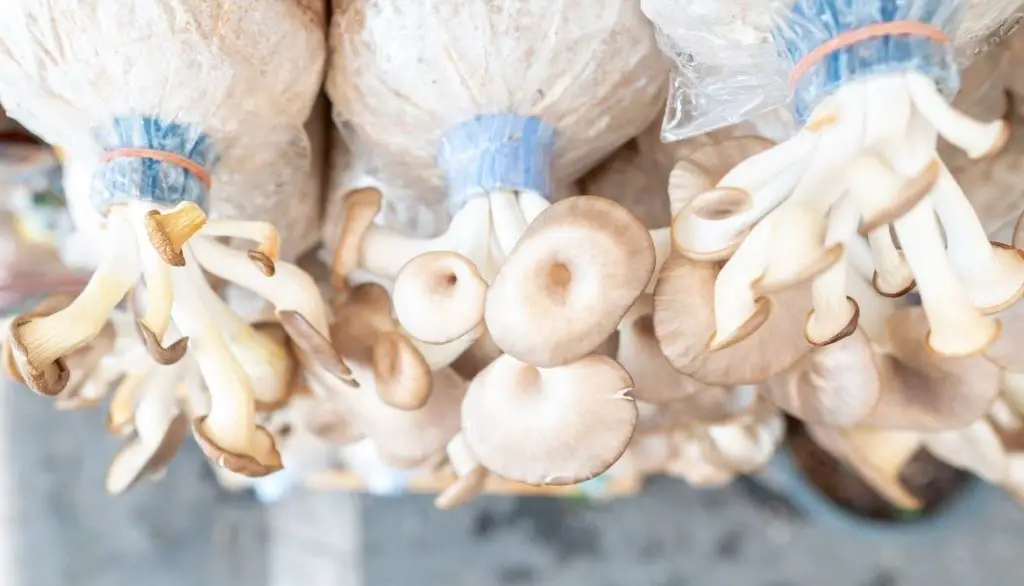
Your go-to way for growing mushrooms will be by grains. With these you can harvest a considerably big amount as the spawn quality will be supreme and mycelium will grow fast.
Experts and mushroom culture hobbyists have noted Rye as the best way to produce mushrooms with grain however we would argue that sterilized millet is the most promising way due to its small size which even puts novice growers at an advantage as the colonization is rapid.
You can shop for excellent quality millet from “Making Mushroom Easy”.
Uses for a Mushroom Grow Bag
Grow Bag can be utilized in different ways to grow mushrooms. Let us share those and you can decide which one suits you best.
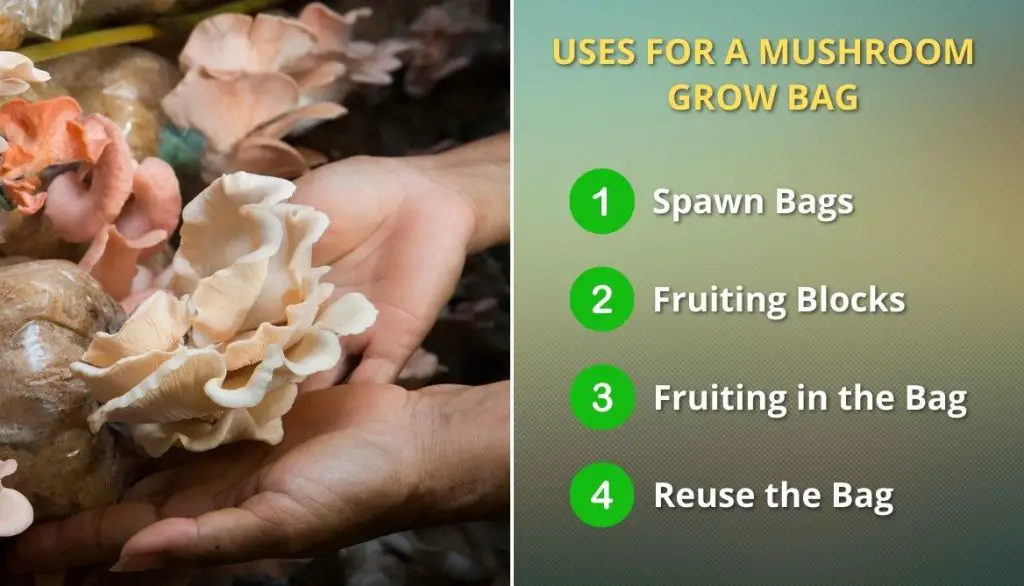
1. Spawn Bags
If you are past producing the first generation and test batches of grain spawn you should switch to a grow bag. The reason being:
- It is easier to manage a large number of spawns in the bag.
- You can break up the bunch or colonize the spawn quicker.
- Colonized spawn is difficult to take out from a jar. You’ll need to use a spoon to scope it out which puts it at risk of getting contaminated, unlike spawn bags.
- Using grain spawn bags will help multiply its growth and generate fruiting blocks.
2. Fruiting Blocks
Grow bags are incredible for making fruiting blocks. Here is why:
- You can expect about 5 pounds of fruiting block counting the weight of the spawn.
- The benefit of the bag is that it contains the substrate neatly.
- Keeps the spores and weeds from forming.
- The filter patch let’s the required fresh air in.
- You can mix spawns after inoculation.
- It lets you monitor the colonization process.
- You can cut small holes in the bag or at the top for fruiting without harming any mycelium.
3. Fruiting in the Bag
Fruiting in the bag is also possible if you:
- Do not cut the top instead just keep it close. The bag can serve as a room or chamber which controls the humidity for the growing mushrooms.
- After the colonization has finished you have to open the bag.
- Let in the fresh air as the filter in this case will not be enough for mycelium.
As a result of fruiting in the bag mushrooms such as Reishi will grow differently. They will turn out to look more like ‘antlers’ than the normal look of a ‘conk’.
4. Reuse the Bag
If you have not cut the top of the bag you can reuse it by making mini straw logs instead of the usual poly tubing. To do that:
- Clean the bag.
- Fill it with grain spawn and pasteurized straw as one normally does when growing mushrooms on straw.
Another use can be to act as a container to create pasteurized casing layer on a stove. In order to create small batches:
- Refill the bag with the casing layer
- Place it in warm water and light the stove.
- You might need to place extra weight on the bag to hold it down in the water.
Recommended Way to Seal a Mushroom Grow Bag?
Sealing the grow bag after inoculation is important to let it colonize and prevent any harmful contaminants from entering. To seal the bag you can use:
- Zip ties or a wire are cost-effective especially when the sawdust spawn is not produced in large quantities.
- When producing in bulk use an impulse sealer. It is much faster and creates a strong seal.
FAQ
What color light is best for mushroom growth?
Blue LEDs have proven to be the best for mushroom growth.
What goes in a mushroom grow bag?
A mushroom bag can contain sawdust, straw, or even wood chips. These are dependent on the type of mushroom you wish to grow.
Do mushroom bags need air?
Mushroom require fresh air to grow this is why a filter on grow bags are necessary.
How long do mushroom bags last?
The bags if stored in a cool and dry place be usable for 2 years. It is recommended that you discard these after one usage as sterilization multiple times can drop the mushroom’s quality.
Do mushroom grow bags expire?
It is best to use the bags within the first 30 days after purchase.
Conclusion
When purchasing a growing bag carefully review the features. The material is thick but breathable, is made up of polypropylene, has a seal, and the bag size is big enough to contain the spawn and filter size around 0.5m.
After reviewing the key features our verdict is that the best mushroom-growing bag is Outgrow Manure-Based Mushroom. It comes with a substrate, has a 0.5-micron filter, and the material is 3.0 mil thick and autoclavable. Some customers argue that it is pricey but considering the value it provides we will still vouch for it.
We will be anticipating your comments about which mushroom grow kits are you planning to buy? Happy growing!
- How to Get Potatoes to Sprout Eyes: Detailed Growing Guide with 3 Options - July 31, 2023
- Weight of a Medium Potato: Revealed in Detailed Guide - July 29, 2023
- Maris Piper Potatoes: 9 Substitutes You Should Know About - July 27, 2023
Hello! I’m Jessica Zander, a garden coach and consultant based in the Boston area (zone 6b), offering virtual consultations across the country and Canada.
I’ve been passionate about gardening since the early 1990s, and in 2022, I launched You Can Do It Gardening to empower individuals to feel more confident in their gardening endeavors.
Following a 30-year career in nonprofit finance and operations, I transitioned out of that field in mid-June of 2023 due to the growing demand for coaching services. Interestingly, my years of presenting financial statements to boards and finance committees proved to be valuable experience for teaching people about gardening! I enjoy sharing skills, providing guidance and suggestions, and collaborating efficiently with clients to make significant improvements to their outdoor spaces, both small and large. I also regularly teach at the Arlington Continuing Education and Cambridge Adult Education.
My approach is direct and practical, akin to Mary Poppins, but tailored to your garden. Clients find satisfaction in saving money and taking pride in their own gardening achievements.

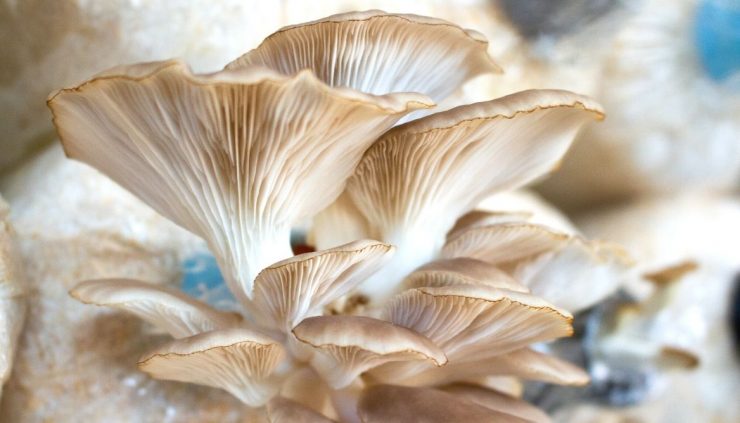



Add comment